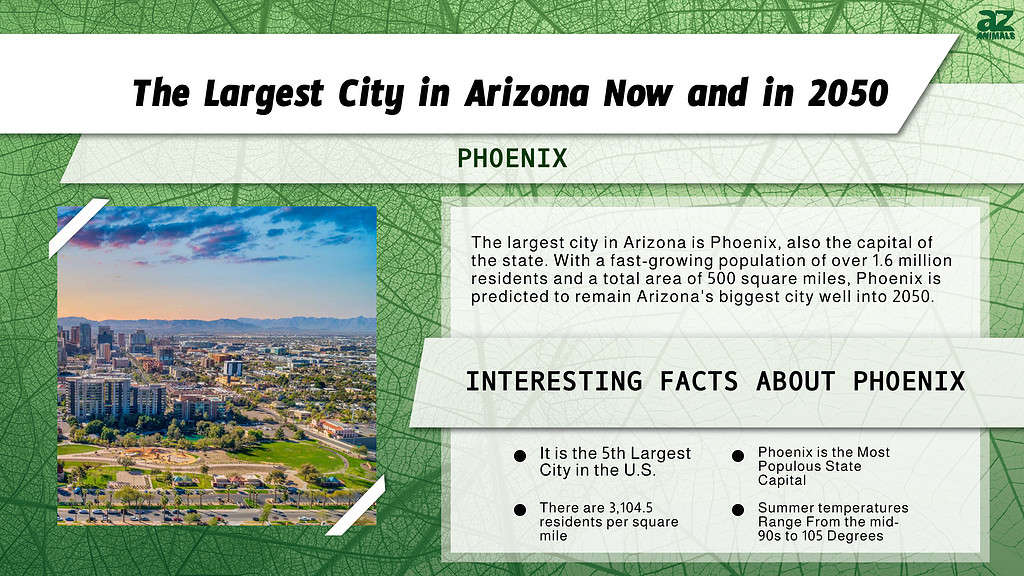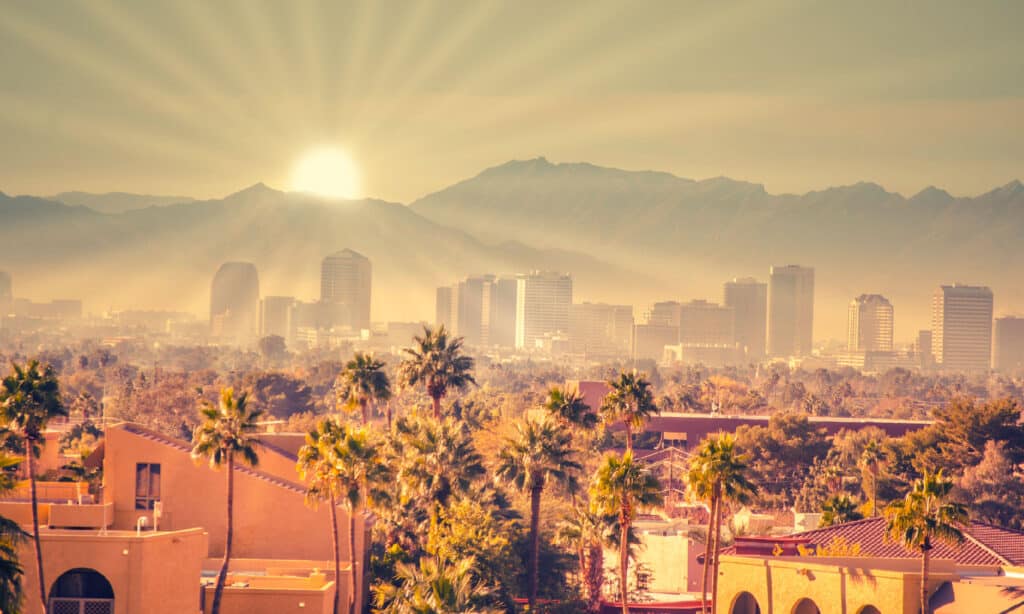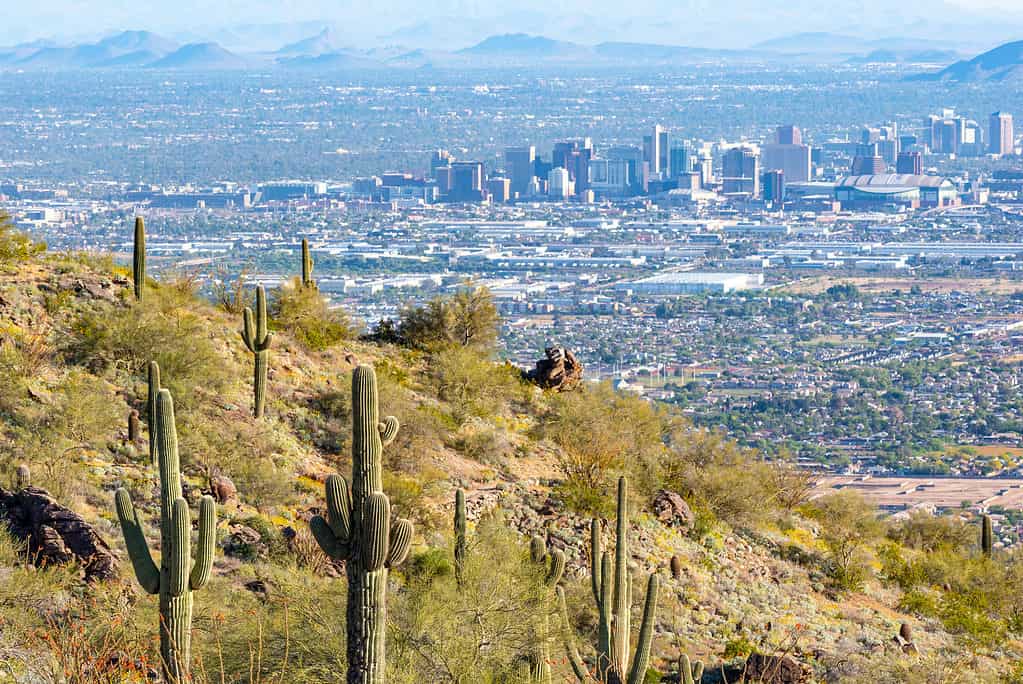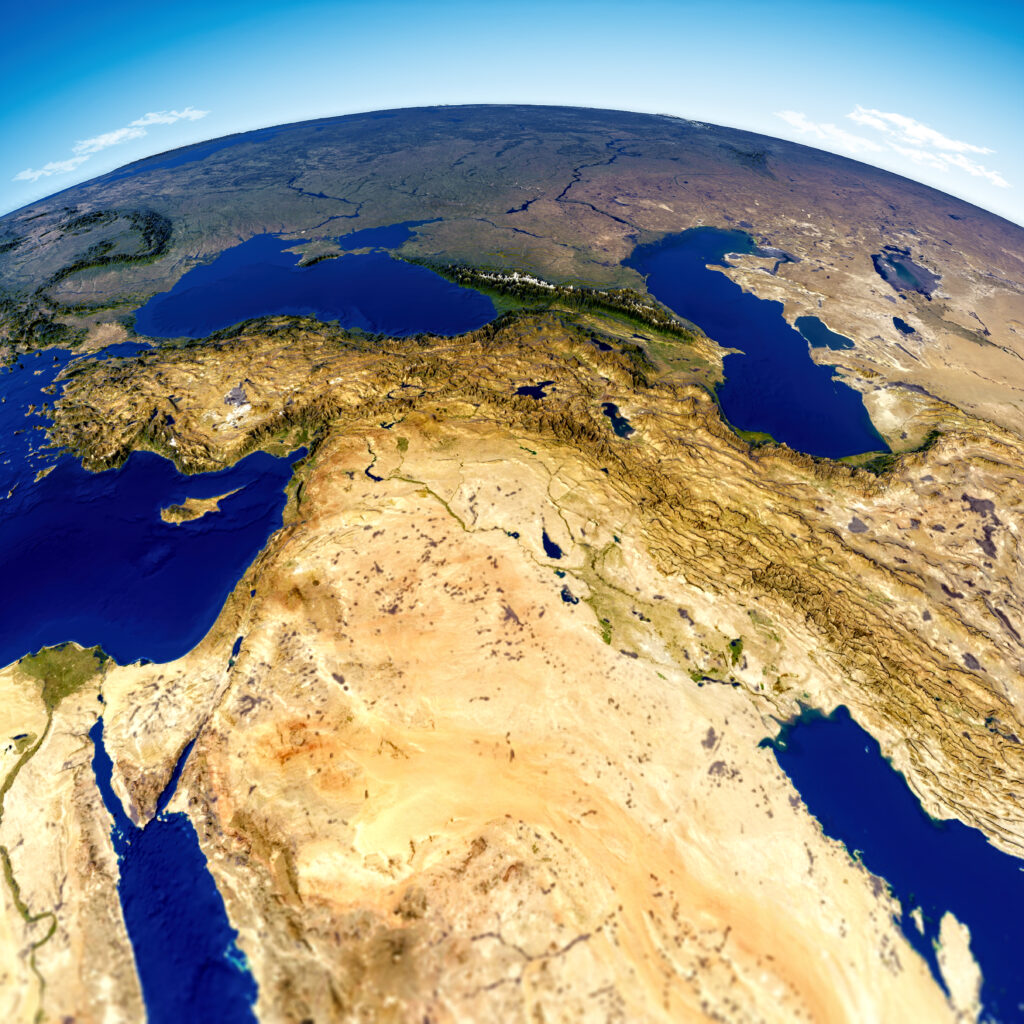
Introduction
Arizona’s most populous city is one of the largest cities in the nation alongside locations like Chicago, Illinois and Houston, Texas. Admitted into the Union in 1912, Arizona lies in the southwest sector of the United States. The population of the state numbers around 7.36 million residents, and the state covers approximately 114,000 square miles. Discover the largest city in this state and find out if it will remain the largest Arizona city by the year 2050.
What is the Largest City in Arizona?
The largest city in the state of Arizona is Phoenix, also the capital of Arizona. Phoenix boasts a population of 1.6 million residents with a metropolitan area population of 4.8 million residents, according to 2020 estimates. In addition, the total area of Phoenix covers over 500 square miles, making it an extremely expansive capital city.
One interesting fact about Phoenix is that it holds the title of the fifth-largest city in the United States. Moreover, Phoenix is the most populous state capital in the nation. Finally, the population growth rate of the Phoenix metropolitan area measures 1.56%, as of 2022.

Phoenix is the most populous state capital in the nation and the fifth-largest city in the United States.
©iStock.com/BCFC
Phoenix Statistics and Economy
According to the United States Census Bureau, Phoenix has a population density of 3,104.5 residents per square mile. In addition, the median household income in Phoenix measures $64,927. Moreover, the Gross Domestic Product (GDP) of Phoenix sits at 261.71 billion U.S. dollars, as of 2021. Phoenix’s GDP per capita measures $44,534, as of 2017.
The main industries that support the economy in Phoenix include tourism, services like insurance and banking, and manufacturing. Furthermore, agriculture also helps sustain Phoenix with crops like cotton, vegetables, and fruits. While agriculture was once the largest industry in the city, it has since been surpassed by other modern industries and developments. In fact, the largest employers in the city include the finance and banking sectors alongside hospitality and tourism.
What Attracts People to Phoenix?
Phoenix is a highly populated city for various reasons. For one, many job opportunities exist in the area in industries like manufacturing, transportation, health care, technology, and more. In fact, the unemployment rate in Phoenix currently sits at 3.1%, which measures lower than the national average of 3.6%. In addition, Phoenix’s cost of living is lower than average for large cities.
Furthermore, the weather may rank as the most attractive feature of Phoenix. While Phoenix’s climate is hot and dry, the city receives approximately 300 days of sun every year. In addition, hot days in this city are rarely humid. Therefore, many people choose to live in Phoenix for its beautiful days year-round.

Job opportunities, low cost of living, and weather are Phoenix’s main features that attract residents.
©iStock.com/Gregory Clifford
What Will the Largest City in Arizona Be in 2050?
The second-largest city in Arizona is Tucson with a population of 546,019 residents and a metropolitan area population of over one million residents. In addition, the total area of Tucson measures around 238 square miles. Tucson’s population growth rate for 2022 was 0.61%.
Considering Tucson’s population and population growth rate, it’s unlikely that it could surpass Phoenix by 2050. For one, Phoenix’s population remains larger than the entire metropolitan area population of Tucson. Meanwhile, the metropolitan area population of Phoenix measures between four and five times greater than Tucson’s metropolitan area population. Moreover, the annual population growth rate of Phoenix measures much greater than that of Tucson.
Therefore, Phoenix is likely to be the largest city in Arizona in 2050. However, some climate experts believe that Phoenix could be uninhabitable by 2050, leaving some wondering whether another Arizona city will become the largest by population in the state.
Climate Predictions for Phoenix
According to a study by ETH Zürich, Phoenix’s climate could evolve to become drastically hotter and drier by 2050. By comparing the future and current climates of cities around the world, the study determined that cities like San Diego and Phoenix would have temperatures rivaling those in the Middle East and Africa. In fact, Phoenix’s climate was predicted to mirror the climates of sweltering cities in Iraq, such as Baghdad.
Why is Phoenix’s climate becoming hotter and drier? It all leads back to climate change. As fossil fuel emissions are released into the atmosphere, a chemical reaction traps heat close to the Earth’s surface. Thus, surface temperatures rise, and climates gradually grow warmer. In Phoenix, average temperature highs during the summer range from the mid-90sºF to over 105ºF. By comparison, the city of Baghdad sees temperature highs between 98ºF and 112ºF. It appears that Phoenix is gradually approaching Baghdad’s climate and temperature extremes.
Moreover, Phoenix lacks ample precipitation. Only around eight inches of precipitation fall on the city annually. Baghdad receives very little precipitation, too, amounting to around six total inches every year with no rainfall during summer. In addition, Arizona has suffered intense drought conditions for the last 20 or so years. Bodies of water like Lake Mead have begun to dry up and cannot be replenished due to little rainfall, climate change, and increased evaporation rates.

Climate experts have compared the drought conditions and high temperatures of Phoenix to cities in the Middle East.
©iStock.com/Naeblys
Effects of Climate Conditions in Phoenix
As drought, high temperatures, and dry conditions plague Phoenix, certain industries are sure to suffer. For one, agriculture cannot function nor harvest crops during exceptional drought conditions. Lack of available water sources also causes difficulty in farming food and livestock. As a result, farmers may leave the area to find better work and opportunities elsewhere.
Another group that suffers from extreme drought conditions and high temperatures in Arizona is low-income residents. As temperatures increase and water becomes scarce, low-income residents struggle to stay cool in the extreme heat. Air conditioning in low-income areas can be costly, leaving these people vulnerable.
In addition, Phoenix residents with health problems could suffer from the heat, especially elderly people. Heat strokes and other heat-related health issues can arise in climates like that of Phoenix, and people without the proper resources and healthcare to avoid these complications may suffer the most.
What Does Phoenix’s Projected Climate Mean for its 2050 Population?
Although population growth rates in Phoenix seem to be on the rise, many residents and officials are struggling to mitigate the effects of climate change on the environment. Low-income families could be forced from their homes due to rising heat. Elderly residents could face serious health problems and housing struggles. Finally, farmers may leave the area in search of better land for harvesting crops.
Climate change and drought conditions in Phoenix could worsen over the coming years, and these effects could force people to leave the area. As water becomes less available, some residents may move away from the city to find a more habitable place to live. While no one seems to be leaving Phoenix now, the year 2050 could mean fewer residents in the city due to these environmental problems. It’s possible that Phoenix may not be the largest city in Arizona by 2050 if the climate continues to grow hotter and drier.

If climate change worsens drought conditions and increases average temperatures in Phoenix, residents may begin to move away from the city.
©Globe Guide Media Inc/Shutterstock.com
Top 5 Largest Cities in Arizona: A Comparison
| Ranking | City | Population | Annual Population Growth Rate (2022) | Total Area | Median Household Income |
|---|---|---|---|---|---|
| #1 | Phoenix | 1,651,344 | 1.56% | 517.67 mi2 | $64,927 |
| #2 | Tucson | 546,019 | 0.61% | 238.01 mi2 | $48,050 |
| #3 | Mesa | 516,783 | 1.56% | 138.09 mi2 | $65,725 |
| #4 | Chandler | 283,301 | 0.69% | 65.5 mi2 | $91,299 |
| #5 | Gilbert | 281,169 | 1.46% | 68.79 mi2 | $105,733 |
Thank you for reading! Have some feedback for us? Contact the AZ Animals editorial team.








